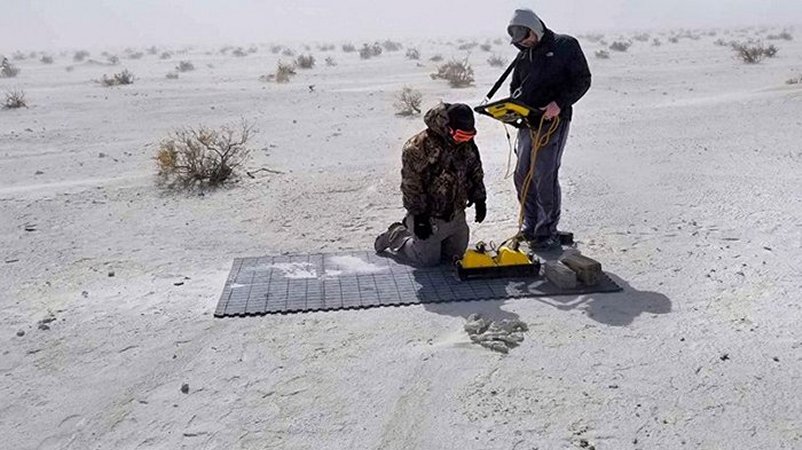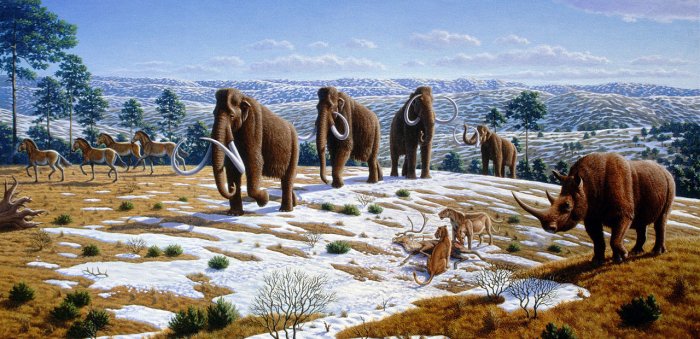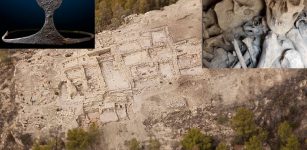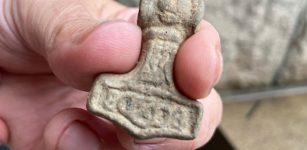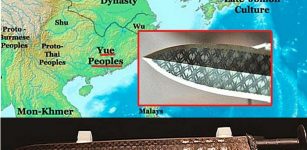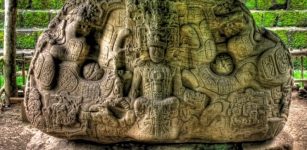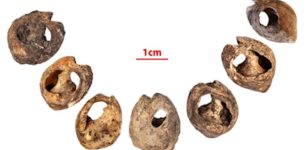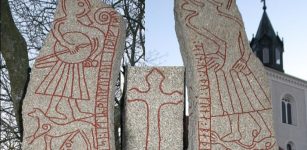Radar Reveals ‘Ghost’ Footprints From Pleistocene Era
Conny Waters - AncientPages.com - Using a special type of radar, scientists have discovered “ghost” footprints dating as far back as the Pleistocene Era.
Invisible footprints hiding since the end of the last ice age offer valuable historical information about our ancestors.
The fossilized footprints reveal a wealth of information about how humans and animals moved and interacted with each other 12,000 years ago.
Researchers at work on the White Sands. Credit: Cornell University
"We never thought to look under footprints," said Thomas Urban, research scientist at Cornell and lead author on the study.
"But it turns out that the sediment itself has a memory that records the effects of the animal's weight and momentum in a beautiful way. It gives us a way to understand the biomechanics of extinct fauna that we never had before."
See also:
Oldest Footprints In Europe Belonged To A Mysterious 950,000-Year-Old Ancestor
The researchers examined the footprints of humans, mammoths and giant sloths in the White Sands National Monument in New Mexico. Using ground-penetrating radar (GPR), they were able to resolve 96% of the human tracks in the area under investigation, as well as all of the larger vertebrate tracks.
"But there are bigger implications than just this case study," Urban said in a press statement.
"The technique could possibly be applied to many other fossilized footprint sites around the world, potentially including those of dinosaurs. We have already successfully tested the method more broadly at multiple locations within White Sands."
Pleistocene of Northern Spain, including woolly mammoth, cave lions eating a reindeer, tarpans, and woolly rhinoceros. Credit: Mauricio Antón, CC BY 2.5
While these "ghost" footprints can become invisible for a short time after rain and when conditions are just right, "now, using geophysics methods, they can be recorded, traced and investigated in 3D to reveal Pleistocene animal and human interactions, history and mechanics in genuinely exciting new ways," said co-author Sturt Manning, archaeology professor.
See also: More Archaeology News
In addition to this biomechanical treasure trove of data, the GPR technique gives researchers a way to learn about what early humans did when they were not at a campsite or kill site, the two types of archaeological sites best known for this time period.
Written by Conny Waters - AncientPages.com Staff Writer

